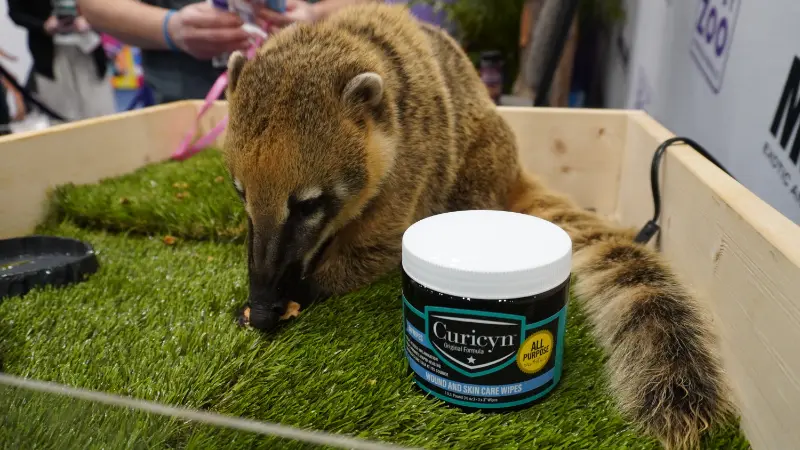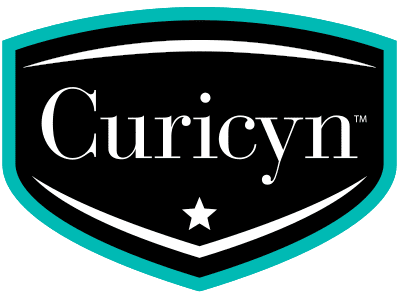It’s a Zoo Out There: Celebrating Zookeeper Week with Curicyn
Curicyn’s line of animal wound care products is known for its effectiveness and safety on a wide variety of animal species. From reptiles to rodents, birds, mammals, and more, it’s no secret that Curicyn provides fast anti-bacterial healing qualities to minor cuts, abrasions, and irritations so that animals can heal and thrive. As we celebrate zookeeper week, we’re spotlighting a day in the life of a zookeeper and how Curicyn is wonderful for zookeepers and their charges everywhere!
A Day In the Life of a Zookeeper
A day in the life of a zookeeper is busy, physically demanding, and deeply rewarding, centered on the care and well-being of animals. Here’s a detailed look at what a typical day might involve:
Morning: Animal Check and Feeding
- 6:30–7:00 AM: Arrival and Briefing
- Zookeepers arrive early.
- They attend a short staff meeting to discuss updates, health issues, or special plans (e.g., vet visits, new arrivals).
- 7:00–9:00 AM: Morning Rounds
- Begin by checking each animal to ensure they are healthy, active, and behaving normally.
- Perform a quick visual inspection of enclosures.
- Feed the animals according to a precise diet plan tailored to each species.
Midday: Cleaning and Enrichment
- 9:00 AM–12:00 PM: Cleaning & Habitat Maintenance
- Clean enclosures (remove waste, replace bedding, scrub water troughs).
- Refill clean water.
- Maintain habitat elements: rearrange logs, clean glass, rake sand, and so on.
- 12:00–1:00 PM: Lunch Break
Afternoon: Enrichment, Education, and Health Care
- 1:00–3:00 PM: Animal Enrichment
- Provide mental and physical stimulation: puzzle feeders, scent trails, toys, or frozen treats.
- Sometimes, introduce new elements to mimic wild environments.
- 3:00–4:00 PM: Public Interaction and Education
- Lead or assist with public talks, feeding demonstrations, or school group tours.
- Educate visitors about animal behavior, conservation, and responsible wildlife care.
- 4:00–5:00 PM: Health Checks and Paperwork
- Administer medications or assist the vet if needed.
- Record observations and behaviors into logs.
- Update feeding schedules and health charts.
Evening: Final Rounds and Lockdown
- 5:00–6:00 PM: Final Feedings and Lock-Up
- Feed any animals that eat later in the day.
- Lock up enclosures, secure gates, and ensure all animals are accounted for.
- Double-check heating, lighting, and climate controls (especially in sensitive habitats).
That’s a lot of responsibility for one person! In addition to daily routines, other duties may include training animals for medical procedures (e.g., blood draws, weighing), assisting with animal transport or habitat renovation, participating in breeding or conservation programs, continuing education, and any other tasks that support the zoo and the animals in their care.

This coatimundi was happy to pose with Curicyn Wound Care Wipes at zoo animal exhibit at Global Pet Expo.
Planning for the Unexpected
Zoos must be prepared for the unexpected, whether that’ involves simple scrapes and abrasions, or being prepared in the event of a natural disaster or weather-related issue. Every zoo is different, and factors such as location, size, and the types of animals they house, must be taken into consideration for the welfare of the animals.
Many zoos, especially larger ones, have an on-site team of veterinary professionals ranging from technicians to doctors, and various specialists, to attend to their animal residents. In addition to assisting with regularly scheduled check-ups, vaccinations (as needed by species), and physical exams, zookeepers are also responsible for identifying when an animal requiresveterinary attention. In the case of minor wounds or injuries, the zookeeper can attend to the animal themselves, noting it in the animal’s chart and alerting the veterinarian should any issues persist.
When it comes to treating animal wounds and skin issues, Curicyn’s gentle formulas are safe and effective. Zookeepers use it to help all sorts of animals. Our non-drying wound care formulas are gentle for sensitive lizard scales, bird feathers, or underbellies and pouches of baby kangaroos!
Being a zookeeper requires physical stamina, deep compassion, scientific expertise, and unwavering dedication. It’s not just about “playing with animals”. It’s about keeping them safe, healthy, and enriched every single day. It also allows the public to visit and see animals from all around the world firsthand, and learn more about the wonders of the Animal Kingdom. Curicyn is proud to be a part of zoos around the country, as we love animals of all shapes, sizes, and origins!

Curicyn’s wound care products are safe and gentle even on lizards.
Curicyn is proud to offer wound care solutions for all animals and to be a part of zoos everywhere. Do you have a great story about Curicyn to share with us? Tag us on social at @Curicyn, and you may be featured in one of our upcoming posts. We’re so happy you chose Curicyn to help your animals heal and thrive.
